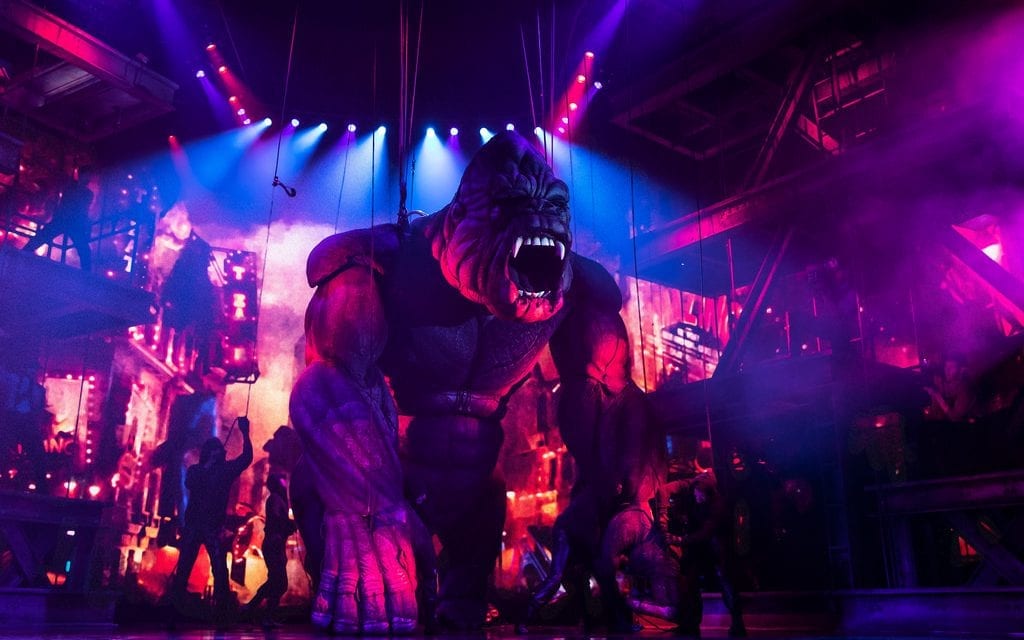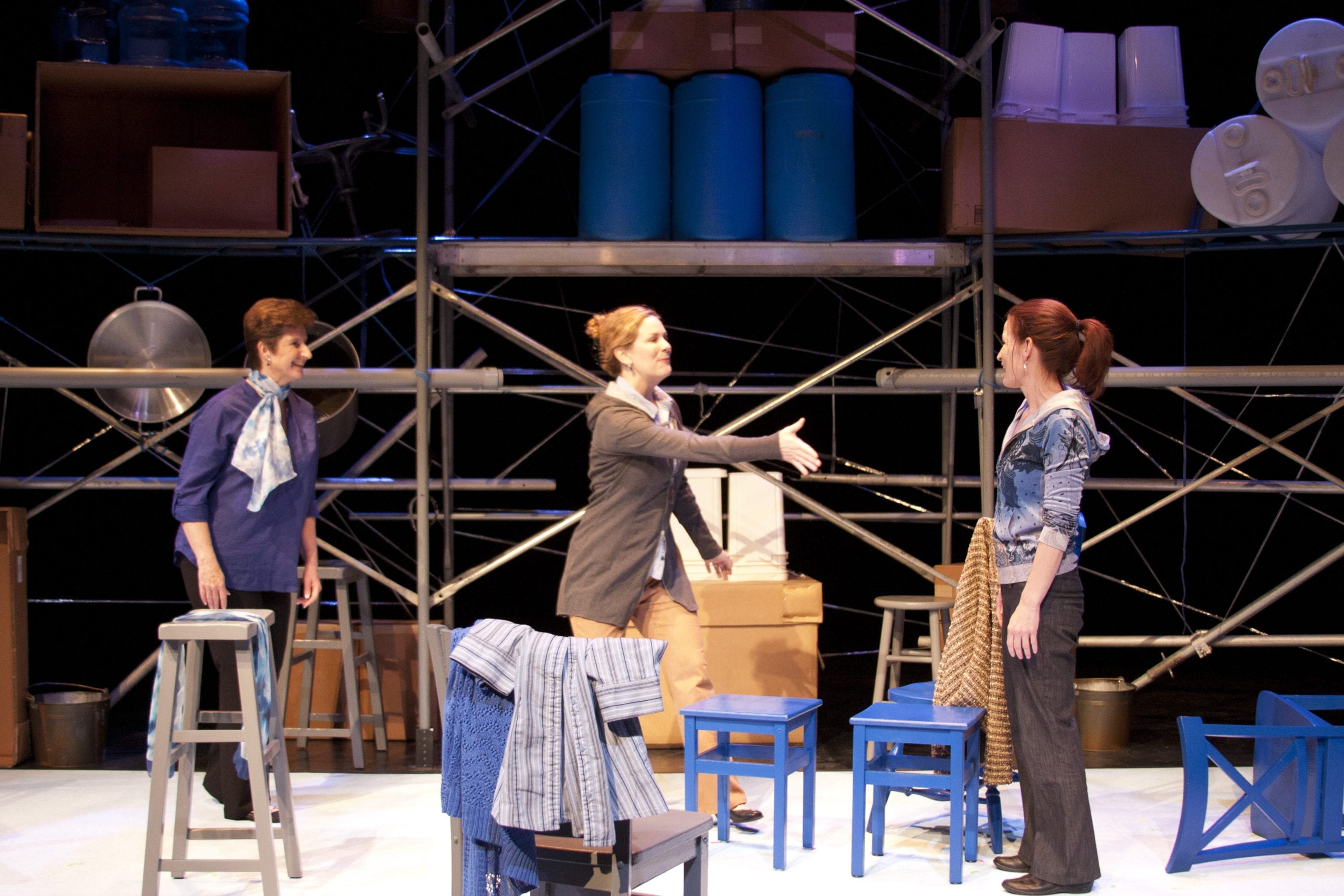NEW YORK — The image that comes to mind when someone says, “King Kong,” has been an intrinsic icon in American pop culture for 83 years with the character’s debut in the 1933 film of the same name. Fast forward to 2018, and the epic ape has found a home at the Broadway Theatre in the icon Times Square theatre district of Manhattan. After a debut in 2013 in Australia, the musical King Kong went through several rewrites and a new creative team to get to the adaptation on stage today. Written by Jack Thorne, of Harry Potter and the Cursed Child fame, with songs by Eddie Perfect and score by Marius de Vries, the show follows the story of a young Ann Darrow, played by Christiani Pitts, as she comes to NYC to make it as an actress. She meets director Carl Denham, played by Eric William Morris, and he tells her about his plans for a new movie on a boat and she joins him. Their trip leads them to skull island and the beast King Kong, the majestic creature puppet designed by Sonny Tilders. The puppet mastery of King Kong is easily the main star and experience of the show.

Show on an open-ended run on Broadway.
As a story, King Kong is sadly lacking, but as a visual spectacle, King Kong is quite breathtaking. The visuals are not limited to the the actual puppet. The opening scene shows a 1930s New York with the growing buildings among the great depression poverty surrounded by the anticipated masterpiece of the Empire State Building. The spellbinding scenic and projection design by Peter England was perhaps the most visually stimulating live theatrical experience of my life. The visuals continued to build through a surprisingly amazing scene of boarding a ship and sailing toward the fabled skull island. All of these visuals were prelude to the entrance of the puppet of Kong maneuvered and mastered by several players billed as the King’s company. His initial entrance had a surprising build with just his breath and steps slowly building and the sound of footsteps coming closer and closer until he appeared on stage to complete awe. Designer Tilders has really lifted the performance puppetry to new levels. Throughout the show, the creature shows differences in facial expression, eyes, and movement that I would not have imagined possible if I had not seen it with my own eyes. Additionally, scenes with Kong running through the island, climbing buildings, and much more have many combined elements, such as the lighting by Peter Mumford, sound by Peter Hylenski, and some marvelous orchestrations by de Vries. For those visuals alone, it is a show I would absolutely see again.

Christiani Pitts as Ann Darrow and the King’s company as King Kong.
Having given that praise, I cannot say the show is not without significant problems. It is a puzzle full of good pieces that have somehow been put together in a very wrong way. The opening number, “Dance my Way to the Light,” was visually stunning, and the music felt like it had stepped off the pages of Newsies. The second number, “Queen of New York,” felt more like it belonging in a show like Thoroughly Modern Millie, while building the boat would have felt more in place in a show like Aida. Taken separately, these numbers might have been decent, but putting them together made the story feel choppy and sporadic. Pitts played a lovely Ann, a young woman trying to get a big break in NYC, but the story arch of her character left a lot unexplained. While Pitts’s performance was well thought out with the material given her, she would have a better chance with a tighter score. The same can be said of the other main characters, especially for Lumpy, played Erik Lochtefeld. He was an interesting and strong actor, and I found myself wishing his character could have had a better back story or stronger development.
Musical theatre is perhaps my favorite medium of artistic performance, however at intermission I decided that I might have appreciated this story and spectacle more if it had been presented as a play with orchestrations rather than a musical. The second act only increased that feeling in me. The musical numbers did very little to move the plot forward with the exception of some of the numbers sung by Pitts, such as, “Full Moon Lullaby,” and, “Last of Our Kind.” Overall, if the focus had been more on building the story and less on the songs, it would have improved the overall feel of the show. The orchestrations and live music did add a great deal, and I would not want to see the instrumental music sacrificed.
The most difficult part of this show was the potential lost in the performance. As stated previously, the show made for an evening like no other, leaving me still wondering how the technical team was able to pull off such a fantastic live experience. However, the story-line, dialogue, and vocal music did not match the level of technical excellence. I have seen many shows go through a period of transition and redevelopment until the final product matches the level needed, and I am hopeful that King Kong can do the same. It is a worthwhile experience of art, and with some work, it could be a truly magical production.





